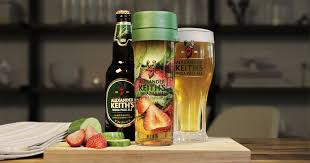Food & Frolic in the Canadian Maritimes
Food & Frolic in the Canadian Maritimes


We’ve got lots of goodies in store on our NEW Canadian Maritimes trips: on Prince Edward Island folks are shaking it up to Celtic music and meeting the locals via fun, traditional gatherings and dances. In addition, we’ll take a step off the eaten path in Nova Scotia and test our epicure skills on the streets of Halifax and beyond. Read on for more food tips and fun in our new ‘friendly neighbor’ favorite cycling destinations!
NOVA SCOTIA: Maritime Foodie Scene
For a small province, Nova Scotia certainly has large stories to tell. Like its geography and its people, this province is a medley of the hard and the soft, the beautiful and the precarious; full of a past that’s light and dark – but ever resilient. But, let’s get down to our most favorite subject: FOOD!
Of course, while they’re dancing the Celtic cha-cha on Prince Edward Island, Nova Scotians are getting very serious about their food scene and in particular about their seafood–and their meat. In these parts we’ll be chowing down on the best lobster around, lounging at incredible raw oyster bars, and enjoying the local Digby scallops—all washed down with some great Alexander Keith centuries old ale. Been there? Done that? Not yet. And, not with us!


As for meat dishes nothing tops the local, traditional corn beef and cabbage dinner. This is just an all time favorite, delicious classic. But, did you know there is an official “street” food in Halifax? As of last December, the donair was named the official food of Halifax. While it was a polarizing decision, it’s curious to recognize this unique Halifax creation. Modelled after the Döner Kebab, it’s become a real local “thing.” What is a donair? Thick slices of finely shaved, heavily spiced meat, served on a warm Lebanese-style pita bread and topped with diced tomatoes, freshly sliced raw onions and lathered in a sweet, cream-based sauce. Be aware: ordering a donair is like ordering a cappuccino after 11 a.m. in Italy. You can enjoy them anytime of the day, but the locals might spot you as tourist if you ask for one before the sun goes down.
 photo: Sherman Chan
photo: Sherman Chan
The donair is to Halifax what the banh mi is to Saigon, the jambon-beurre to Paris. It is a quintessential Haligonian gastronomic experience, as East Coast as Jiggs dinner. Best eaten late at night and on the street, it is a sweet and savory, tasty and messy snack for meat lovers.
The history of the donair is a little murky. Its predecessor, the doner kebab, was made in the 1950s by the owner of a Turkish kebab house in Berlin. The Greek adaptation, the gyro, soon followed, and it was this version that the Kamoulakos brothers tried to introduce to Bluenosers during the late 1960s at their small restaurant in Bedford, Nova Scotia. The brothers soon found, however, that Nova Scotians weren’t so fond of lamb served with a yogurt-based sauce. They ditched the lamb for beef and crafted the distinctive sweet sauce, creating something quite removed from shawarma and kebab. So, there you have it. The Nova Scotian adaptation.
We promise to share all of this and more on our Nova Scotia Bike Tour.
All promises kept!
{{cta(‘6d94b2d6-decb-4148-af1d-17741c947d5e’)}}
PRINCE EDWARD ISLAND: Celidh Dancing
What is a ceilidh you might ask? Think hoedown. Barn dance. You are getting warmer…
The word ceilidh (pron:‘kay-lee’) is the Gaelic word for “gathering” or “visit.” It is said to have originated from Ireland but ceilidhs have now spread across the globe where both Irish, Scottish and English roots have taken hold. So simply put, a ceilidh is a gathering of people where traditional Celtic music is celebrated. On Prince Island Edward, ceilidhs have been happening for generations and are an essential part of island life.
 photo: Julie V More & istockphoto
photo: Julie V More & istockphoto
A ceilidh band usually has about five members. The accordion, fiddle and drums are usually played, but bands may have other instruments such as the flute or guitar. Ceilidh dancing is super energetic, sometimes moving very fast and it’s a whole lot of fun. A great way to break the ice. The dancing is subtly different from traditional Scottish country dancing, which shares the same roots but can be more technical and even competitive. And, no need to worry about learning the dances before you go to a ceilidh as there will usually be a ‘caller’ there who will explain the dances before each one begins.
 photo: John G Moore
photo: John G Moore
Our local Canadian guide Ken Chambers adds: “There are numerous pubs and community centers in PEI and the Maritimes in general. You want the ones in the smaller communities where there are regularly held get- togethers in the evenings with music and dance, admission is nominal and there is no liquor or little of it; it’s the perfect way to experience the local culture.”
{{cta(‘a000f375-e76a-4d0c-b867-a7b711d55ace’)}}
